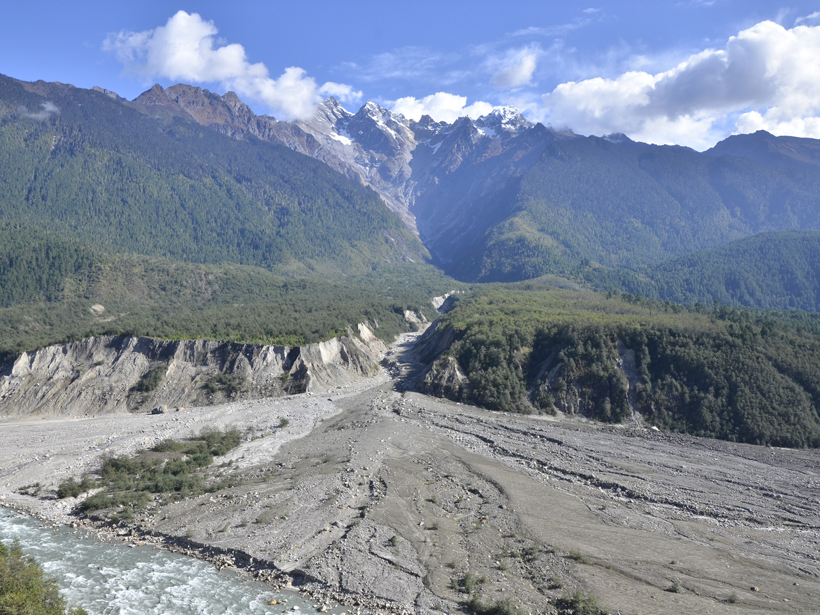Source: Journal of Geophysical Research: Solid Earth
Rock avalanches, sudden rock slope failures characterized by very rapid velocities, long runouts, and large volumes, pose some of the most dangerous and expensive geological hazards in mountainous regions. Although numerous mechanisms, including air pockets, fine powder along their base, and elevated pore fluid pressure, have been proposed to explain rock avalanches’ distinctive characteristics, the specific reasons for their “hypermobility” are still vigorously debated by scientists.
To improve our understanding of what causes these disasters, Wang et al. conducted a series of laboratory tests to examine the weakening mechanisms that contributed to the high-speed motion of the Yigong rock avalanche on the Tibetan Plateau in 2000. This event dislodged 110 million cubic meters of material, which traveled more than 10 kilometers in 10 minutes before reaching and damming the Yigong River. Two months later, when the river finally broke through the avalanche debris, it unleashed a devastating flood that killed 94 people and destroyed the homes of more than 2 million citizens.
Using a shear rotary apparatus, which rapidly rotates ring-shaped samples to simulate motion along a fault, the team varied the rate at which they applied shear stress to samples of soil obtained from the base of the Yigong rock avalanche and then analyzed each deformed sample’s features. The results indicate that elevated temperatures caused by frictional heating weakened the Yigong basal soil through the combined effects of two mechanisms: moisture fluidization, which both lubricates the sample and reduces the adhesion between its fine particles, and thermal pressurization, which causes friction-heated water to expand, further weakening the fault zone.
Although the generation of nanoparticles from particle fragmentation may also facilitate soil weakening, this mechanism did not play a key role in generating the Yigong rock avalanche, the team reports. The results have implications for researchers in many geologic disciplines, including landslide dynamics, earthquake mechanics, and risk assessment. (Journal Geophysical Research: Solid Earth, https://doi.org/10.1002/2016JB013624, 2017)
—Terri Cook, Freelance Writer
Citation:
Cook, T. (2017), What causes rock avalanches?, Eos, 98, https://doi.org/10.1029/2017EO071747. Published on 24 April 2017.
Text © 2017. The authors. CC BY-NC-ND 3.0
Except where otherwise noted, images are subject to copyright. Any reuse without express permission from the copyright owner is prohibited.

